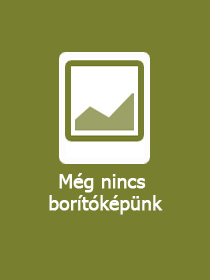
A termék adatai:
| ISBN13: | 9780838948026 |
| ISBN10: | 0838948022 |
| Kötéstípus: | Puhakötés |
| Terjedelem: | 120 oldal |
| Méret: | 228x152x6 mm |
| Súly: | 175 g |
| Nyelv: | angol |
| Illusztrációk: | 1 illustration |
| 150 |
Témakör:
The Library Liaison`s Training Guide to Collection Management
Sorozatcím:
ALCTS Monograph;
Kiadó: MP?ALA American Library Assoc
Megjelenés dátuma: 2020. szeptember 30.
Kötetek száma: Paperback
Normál ár:
Kiadói listaár:
GBP 43.00
GBP 43.00
Az Ön ára:
19 586 (18 653 Ft + 5% áfa )
Kedvezmény(ek): 10% (kb. 2 176 Ft)
A kedvezmény csak az 'Értesítés a kedvenc témákról' hírlevelünk címzettjeinek rendeléseire érvényes.
Kattintson ide a feliratkozáshoz
Kattintson ide a feliratkozáshoz
Beszerezhetőség:
Becsült beszerzési idő: A Prosperónál jelenleg nincsen raktáron, de a kiadónál igen. Beszerzés kb. 3-5 hét..
A Prosperónál jelenleg nincsen raktáron.
Nem tudnak pontosabbat?
A Prosperónál jelenleg nincsen raktáron.
Rövid leírás:
Library liaisons often have primary jobs that do not involve collection development, but their familiarity with collection practices makes all the difference in faculty relations. And time pressures mean that on-boarding needs to be as streamlined as possible. This concise, field-tested training manual will put your liaison on solid footing.
Hosszú leírás:
Library liaisons often have primary jobs that do not involve collection development, but their familiarity with collection practices makes all the difference in faculty relations. And time pressures mean that on-boarding needs to be as streamlined as possible. This concise, field-tested training manual will put your liaison on solid footing. Plus, end of the chapter prompts make it easy to tailor your approach to local practices. With the help of this resource, your new liaison will get up to speed on such topics as
- tracking budget balances in assigned departments;
- differentiating between the needs of an individual faculty member and their department;
- how to say no to monograph requests;
- benchmarking titles with peer institutions or coordinating within a consortium;
- 17 questions to ask when evaluating a database;
- considerations when making weeding decisions;
- four key conversations to have annually between liaisons and collection development librarians; and
- gathering data for program accreditation reports.
Utilizing several dozen real-world examples which show liaison decisions and actions in practice, this guide will be a useful tool for collection development librarians to streamline training processes for library liaisons.








